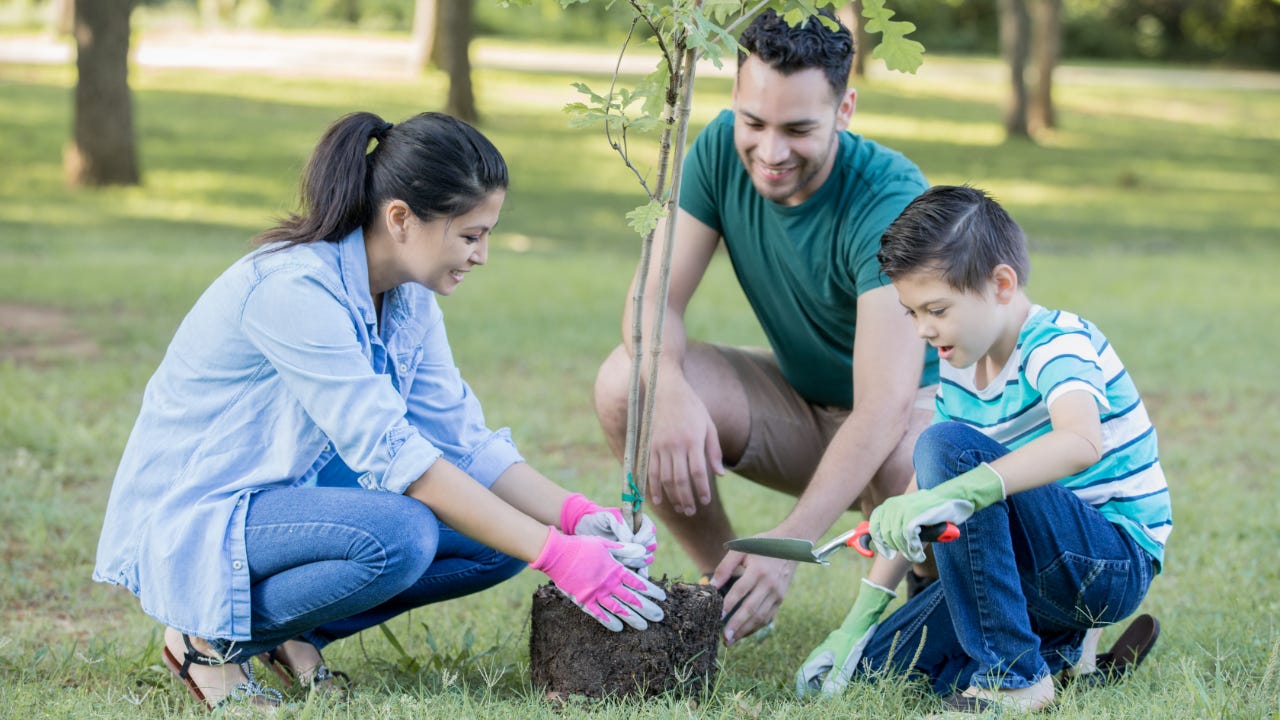Green banking: 5 simple ways you can help protect the environment

The Bankrate promise
At Bankrate we strive to help you make smarter financial decisions. While we adhere to strict , this post may contain references to products from our partners. Here's an explanation for .
Everyone can do a little bit to help the Earth.
Believe it or not, the way you bank can also make an impact.
Banks know that climate change and global warming are important to many banking customers and you can do your part to help the environment through your banking choices. Follow these five green banking tips to help the planet.
1. Go paperless
This is one of the easiest ones. Not only does it help the environment by using less paper, it can also reduce clutter around your home and in your mailbox. It also means you’ll get your bank statement as soon as it becomes available.
Paperless can mean e-statements or it could mean a text or email receipt at the ATM too. It’s always a good idea to have proof of your transaction. But that proof doesn’t necessarily have to be a piece of paper.
Also, going paperless may save you money by avoiding paper statement fees. Paper statement fees can generally cost you between $1 or $5 each month.
You can also reduce usage of paper checks by using an electronic transfer service, like Zelle, to make payments to people and billers.
2. Research your bank’s lending and investment portfolios
When it comes to green banking, one important aspect to consider is where your bank invests its funds. By researching a bank’s investments, you can make informed decisions to avoid supporting financial institutions that may be contributing to environmental harm, such as by financing fossil fuels.
Banks may disclose information about how they invest on their websites or in sustainability reports. Alternatively, you could use a site like BankTrack, which provides detailed information on most banks’ financing initiatives, tracking the involvement of banks in things like coal mines, oil drilling or pipeline construction.
3. Do business with a bank that cares about the environment
Some banks really put an emphasis on being green and protecting the environment. One way to support these efforts is to open an account with an eco-focused bank.
One place to start is by looking into banks that are members of the Global Alliance for Banking on Values (GABV) or that are B Corp certified. Both of these networks require that member institutions meet certain standards for sustainability and social responsibility.
Limelight Bank is an online bank that has relationships with national solar product providers. It contributes to the funding of solar projects. Limelight Bank offers short-term CDs. It has a six-month CD, one-year CD, 18-month CD and 36-month CD, all with a $1,000 minimum to open.
Bank of America, the second largest bank in the U.S. based on total assets, says it became carbon neutral in 2021.
4. Automate your commitment to the environment
Just like it’s easier to achieve your savings goals by automating your savings through split-deposit, by having a part of your paycheck automatically go into a high-yield savings account, it’s also easier to commit money to the environment by automating it.
At Aspiration, a tree is planted for each completed debit card transaction for those who opt into the Plant Your Change service.
“While others have round ups that go to saving money, this is a roundup that goes to saving the (planet),” says Andrei Cherny, CEO and co-founder of Aspiration.
Aspiration isn’t a Federal Deposit Insurance Corp. (FDIC) bank. But it uses program banks to get its customers FDIC insurance. Always confirm with your bank, or an institution like Aspiration, that you’re within FDIC limits and guidelines. Cash management accounts tend to work similar to Aspiration.
5. Impact investing may be an option for your portfolio
Investing through a social or environmental impact is impact investing, according to Bank of America.
Many Americans are already prioritizing impact in their investing choices. According to a 2021 survey by Morgan Stanley, 52 percent of investors already take part in at least one sustainable investment activity.
Fidelity, for instance, allows you to search for environmental, social and governance (ESG) exchange-traded funds (ETFs) on its website.
Bottom line
Some consumers are thinking more carefully about where they spend their money. The same goes for banking. Whether it’s a bank that’s committed to the environment or an institution that has electronic options to avoid using paper and saving trees, there are a number of ways consumers can make adjustments to their banking to help the environment.
Related Articles


12 ways to bank smarter: Simple tips and tricks to increase your wealth

